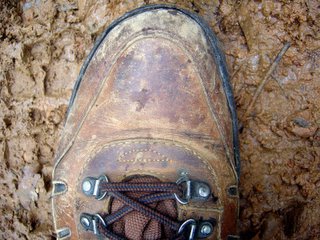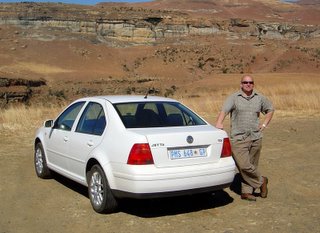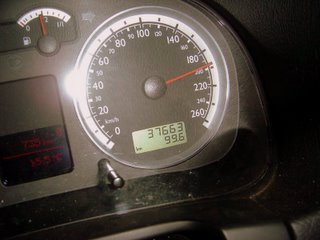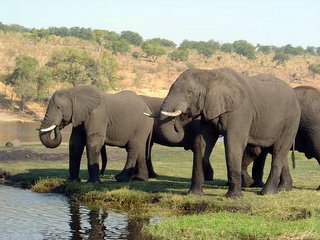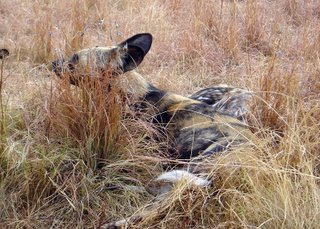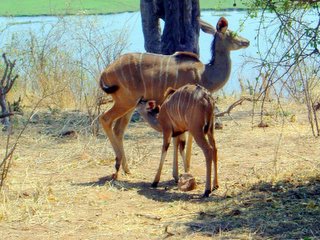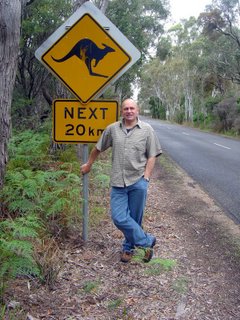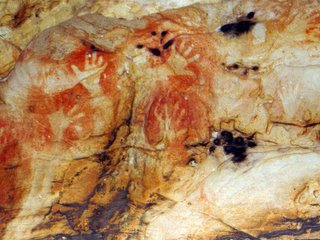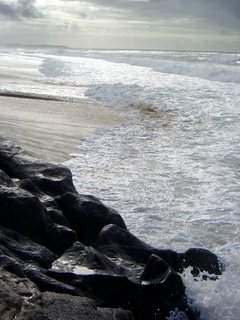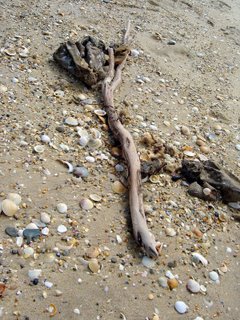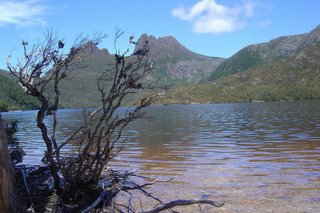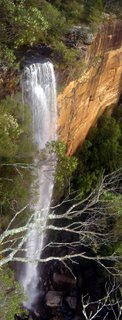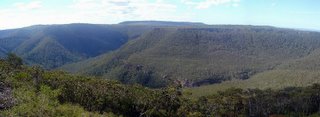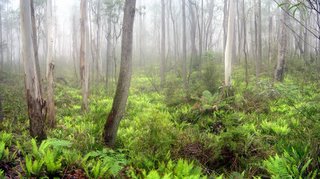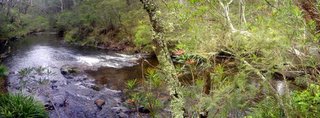 Kruger National Park, Mpumalanga and Limpopo, South Africa
Kruger National Park, Mpumalanga and Limpopo, South AfricaAlthough “Kruger” is one of the world’s premier wildlife parks, populated by thousands of elephants, and just about every other animal found in Africa, somehow the name seems distinctly unAfrican. It almost conjures a picture a huge bruiser with biceps large enough to punch me into next year.
Yet, the park, which is over a hundred years old, takes its name from Paul Kruger, who issued a proclamation establishing it in 1898. At first, it was much smaller and consisteted of the Sabi Game Reserve, a 4,700 square kilometre cross-section, delineated by the Sabie and Crocodile rivers.
Since foundation the park has grown steadilty, combining a number of adjacent reserves. There's a granite memorial with a bust of Paul Kruger in the park.
More information can be obtained on http://www.krugerpark.co.za/ and also at the official site http://www.sanparks.org/ which has everything you need, ranging from distance tables to maps and trails and various amenities. The South Africans represent best practice in provision of information to park users. In fact, they put our national wildlife websites to shame. Check out http://www.sanparks.org/ and compare this with the pathetic NSW wildlife site at http://www.nationalparks.nsw.gov.au/
The SA sites give you everything, even waypoint coordinates. For example, 31.80064 -23.9963 are the coordinates for the Satara Camp which I stayed at. Try getting that or even a trail map from the NSW sites.
How to get there
Drive along the N4 from Joberg, passing through Witbank, all the way to Nelspruit and finally to Komatipoort about 490 kilometres away. That will place you at the southern most gate of Kruger National Park, the Crocodile bridge gate. More detailed directions on how to get to each gate appear on the above listed websites. Once you're at Nelspruit the way to Kruger are well sign-posted.

I told my kids that I had to get up so early in the hope of spotting a big cat, that the mules where still in pygamas.

Blue Wildebeest (above)

Baboon (above)
Ten minutes after entering the park in an area not normally known for elehants, I run into this guy (see below.) Most of the elephants are in the middle of Kruger, around the Oliphants river.
 As I said above, I'd entered at the crocodile bridge gate and came out a couple of days later near the top, emerging from the Punda Maria Gate (in Limpopo) and heading back to Johannesburg via Polokwane (or Peterburg). While there I stayed at the Oliphants and the Satara camps.
As I said above, I'd entered at the crocodile bridge gate and came out a couple of days later near the top, emerging from the Punda Maria Gate (in Limpopo) and heading back to Johannesburg via Polokwane (or Peterburg). While there I stayed at the Oliphants and the Satara camps.
The facilities at Oliphants and, generally throughout the park, are excellent. Each of the camps is walled and, is in effect, a small town with all the creature comforts of home. I saw plenty of elephants, hippos,  rhinos, but no big cats. To see them you need to go on one of the game drives.
rhinos, but no big cats. To see them you need to go on one of the game drives.
The Oliphants camp takes its name from the Oliphants river. The Camp directly overlooks the Oliphants river which is around 100 metres above it to the east. The accommodation at Oliphants is reasonably new too. There is a viewing area just under the restaurant where you can see up to dozen of elephants congregate in the water below. In fact, the area surrounding the camp is full of them.
Anyway, I had a fantastic time. Ciao to Isabella who I met at Satara.
(Love is in the air, below)
Enjoy the photos.(Click em to enlarge em).

